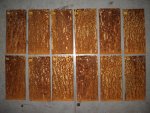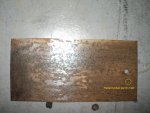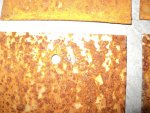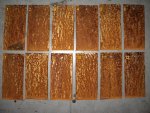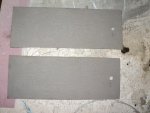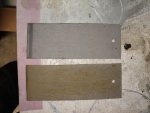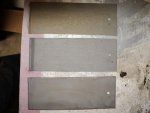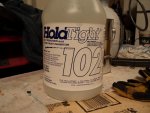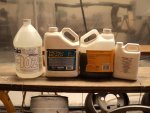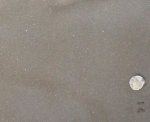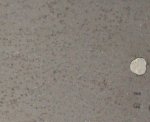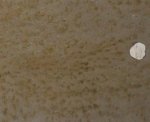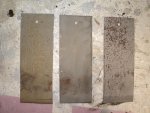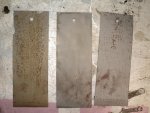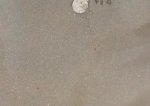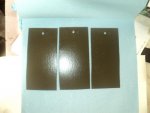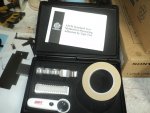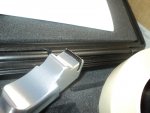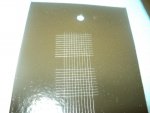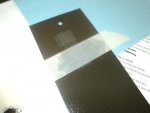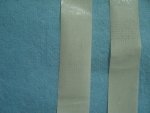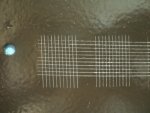asstor
New member
- 35
- 0
- 0
- Location
- Austin, TX
Hi guys.
I have been going crazy over the past year trying to figure out what the best products or process is to prepare sanded or blasted body parts for painting. Phosphoric acid, Metal Ready, Rust Blast, PickleX 20, POR15, Rust Mort, Zero Rust, Hold Tight 102, Chlor*rid, Hold Blast, Evaporust, Master Series, Epoxy, AAAGGGHHH etc, etc, etc.....
etc, etc, etc.....
I have experimented with several of these products and understand the difference between rust converters, rust encapsulators, etch primers, surface cleaners and so on. I also understand the need for a good base to start from like blasting or DA sanding. Where I have run into trouble, as I suspect many others have is ending up with a less than clean surface after blasting.
My example is as follows. I had the stripped down frame of my 1951 M37 blasted, and boy what a job - all clean everywhere. When I picked the frame up, however, I noticed a couple of finger and palm prints on several places on the frame. By the time I had the frame back in my workshop, I had added to the contamination by my sweat dripping on to the frame on a couple of place (90 degrees in my shop with 45% humidity). Now I needed to wait until the next weekend before I could dust, prep and spray primer. By that time the contaminated spots on the frame were sporting some nice flash rust (luckily no over-all flash rust bloom, just the contaminated spots).
I expect this is a fairly common scenario, so I have decided to do an experiment to test a couple of product and processes to see how I get the best results at eliminating or removing flash rust, and where I get the best paint adhesion.
I have twelve 6 inch by 3 inch 22Ga carbon steel test panels that are fairly well rusted (as you would typically find when doing a resto) that I am treating with a combination of the surface prep solutions mentioned above. All the rusted panels will first be sand blasted on one side, and DA sanded with 220 grit on the other side. This will be the starting point for all 12 panels. From there they will be treated by the various solutions and eventually primed with Master Series Silver, and top coated with 2K Urethane from TM9ordnance. The tests will identify the development of flash rust after the blasting and application of the various surface treatments, and how / if they effect paint adhesion (via cross hatch adhesion tests)
The reason I am posting now is to get any input or suggestions from folks to see whether there is interest in such a test or whether I am flying solo. Either way I will post the results when all is said and done. The test involves storing some of the panels in the unfinished state to see if flash rust develps, so this experiment should be done in about a month or so.
I have detailed explanations of the tests, the product and the procedures here:
http://www.m37rebuild.com:82/Shared Documents/Paint adhesion tests.pdf
I am open to any ideas, suggestions or criticism to help make this a valid and worthwhile test. Let me know what you think. I will post pictures as the test progresses.
(here are pictures of my primed and painted frame)
http://www.m37rebuild.com:82/Paint%2.../AllItems.aspx
Thanks,
Louis
I have been going crazy over the past year trying to figure out what the best products or process is to prepare sanded or blasted body parts for painting. Phosphoric acid, Metal Ready, Rust Blast, PickleX 20, POR15, Rust Mort, Zero Rust, Hold Tight 102, Chlor*rid, Hold Blast, Evaporust, Master Series, Epoxy, AAAGGGHHH
I have experimented with several of these products and understand the difference between rust converters, rust encapsulators, etch primers, surface cleaners and so on. I also understand the need for a good base to start from like blasting or DA sanding. Where I have run into trouble, as I suspect many others have is ending up with a less than clean surface after blasting.
My example is as follows. I had the stripped down frame of my 1951 M37 blasted, and boy what a job - all clean everywhere. When I picked the frame up, however, I noticed a couple of finger and palm prints on several places on the frame. By the time I had the frame back in my workshop, I had added to the contamination by my sweat dripping on to the frame on a couple of place (90 degrees in my shop with 45% humidity). Now I needed to wait until the next weekend before I could dust, prep and spray primer. By that time the contaminated spots on the frame were sporting some nice flash rust (luckily no over-all flash rust bloom, just the contaminated spots).
I expect this is a fairly common scenario, so I have decided to do an experiment to test a couple of product and processes to see how I get the best results at eliminating or removing flash rust, and where I get the best paint adhesion.
I have twelve 6 inch by 3 inch 22Ga carbon steel test panels that are fairly well rusted (as you would typically find when doing a resto) that I am treating with a combination of the surface prep solutions mentioned above. All the rusted panels will first be sand blasted on one side, and DA sanded with 220 grit on the other side. This will be the starting point for all 12 panels. From there they will be treated by the various solutions and eventually primed with Master Series Silver, and top coated with 2K Urethane from TM9ordnance. The tests will identify the development of flash rust after the blasting and application of the various surface treatments, and how / if they effect paint adhesion (via cross hatch adhesion tests)
The reason I am posting now is to get any input or suggestions from folks to see whether there is interest in such a test or whether I am flying solo. Either way I will post the results when all is said and done. The test involves storing some of the panels in the unfinished state to see if flash rust develps, so this experiment should be done in about a month or so.
I have detailed explanations of the tests, the product and the procedures here:
http://www.m37rebuild.com:82/Shared Documents/Paint adhesion tests.pdf
I am open to any ideas, suggestions or criticism to help make this a valid and worthwhile test. Let me know what you think. I will post pictures as the test progresses.
(here are pictures of my primed and painted frame)
http://www.m37rebuild.com:82/Paint%2.../AllItems.aspx
Thanks,
Louis
Last edited:




